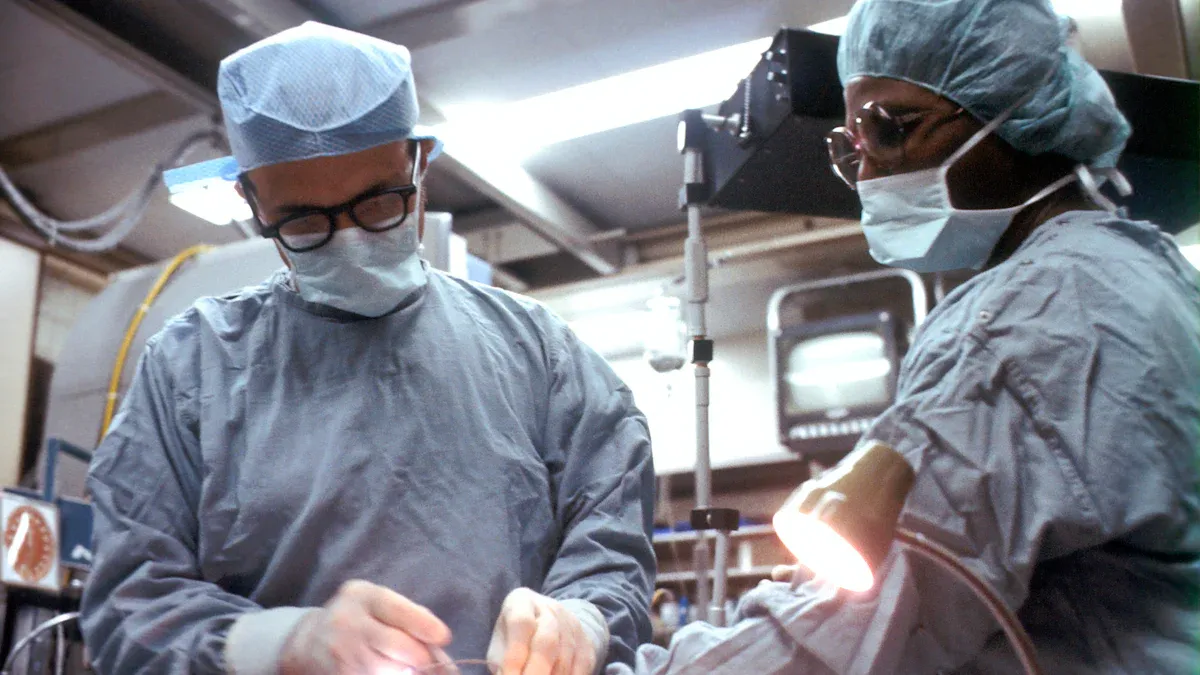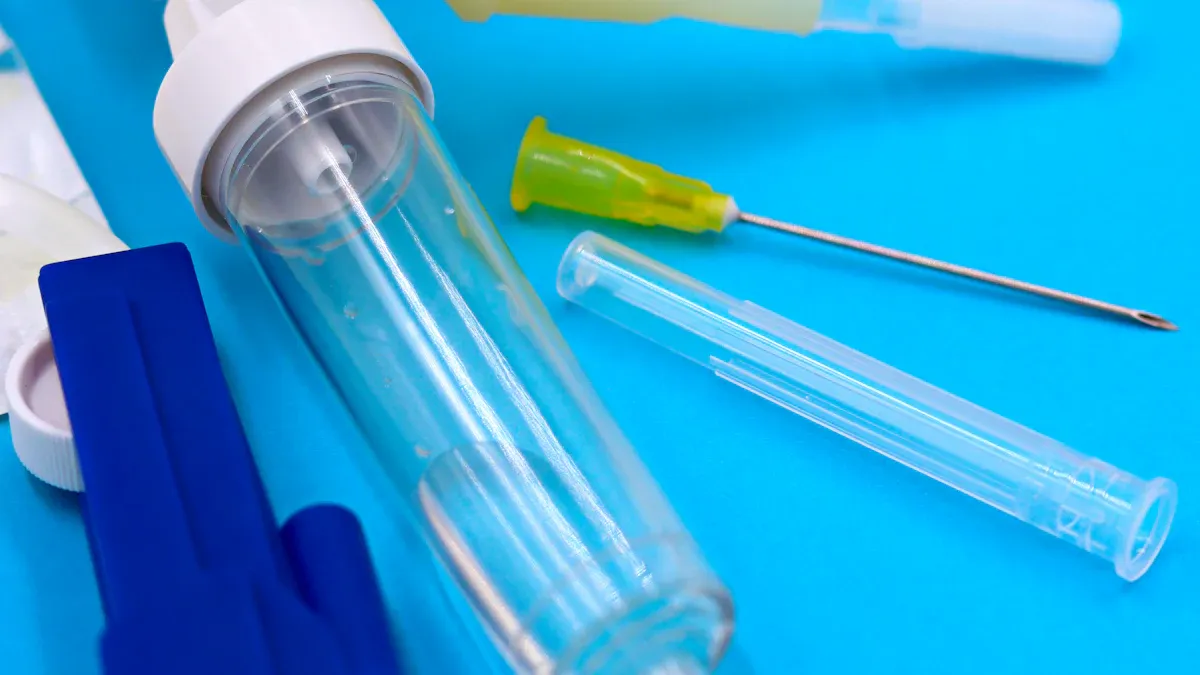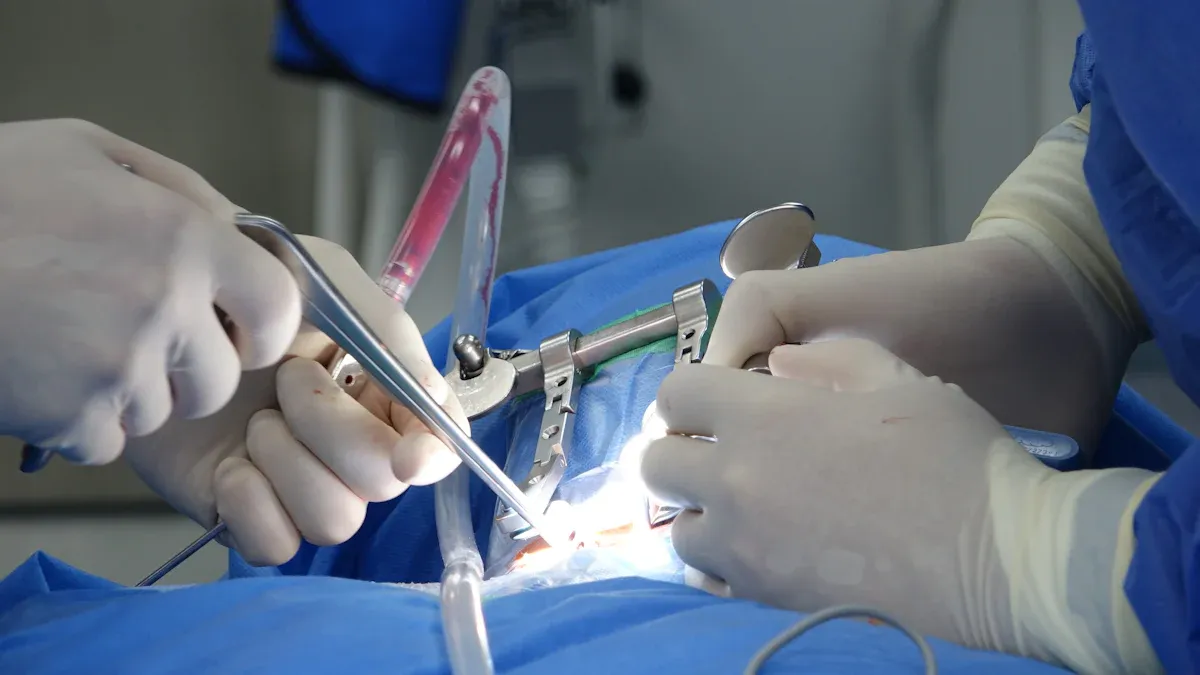What Makes NiTi Cannulas the Top Choice for Biopsy Devices

You choose a niti cannula for biopsy device because it bends easily and stretches well. These qualities allow you to navigate challenging tissue without causing damage. The niti cannula for biopsy device resists kinking and does not wear out quickly, so you can work with precision and care. It is biocompatible and does not rust, ensuring patient safety. By using a niti cannula for biopsy device, you help patients feel more comfortable and achieve reliable results every time.
Key Takeaways
NiTi cannulas are bendy and do not break easily. This helps doctors move them through tough tissues.
Nitinol is superelastic, so doctors can control it better. This makes biopsies more accurate and safer for healthy tissue.
Nitinol does not kink or rust, so cannulas last longer. This helps clinics save time and money.
Using NiTi cannulas makes patients feel less pain. It also helps them heal faster after procedures.
Nitinol is safe for people because it works well with the body. This lowers the chance of bad reactions and helps people heal quickly.
NiTi Cannula for Biopsy Device: Key Properties

Superelasticity and Flexibility
The niti cannula for biopsy device can bend and go back to its shape. This happens because it has shape memory properties. Niti, or nitinol, can stretch and flex but does not break. You can guide the niti cannula for biopsy device through tight or curved places in the body. The superelastic nitinol material lets you control the needle very well. You can reach hard-to-get tissues and cause less harm.
Niti cannulas are flexible, which helps with small surgeries. You can move the needle around sensitive areas. This helps you hit the right spot and not hurt healthy parts. Nitinol needles are made to bend in a controlled way when you put them in. This means you can move the needle just where you want, so your patients are safer.
Niti has special shape memory properties. If you heat the niti cannula for biopsy device, it can bend and then go back to its shape. This helps you do tricky biopsies. The shape memory properties of nitinol let the needle bend when needed and stay strong.
Tip: Superelastic nitinol gives you better control and flexibility, so your biopsy procedures are safer and more exact.
Kink Resistance and Durability
You want a biopsy device that does not kink or break. The niti cannula for biopsy device is good because it resists kinking. Niti, with shape memory properties, can bend and twist many times. This means you can use it longer without it breaking.
Nitinol is known for being tough and lasting a long time. You can bend the niti cannula for biopsy device many times, and it still works. This is because nitinol has a strong atomic structure. The superelastic nitinol material does not get bent out of shape, so you do not need to replace it often.
Niti also works well when the temperature changes. The shape memory properties help the cannula stay strong and flexible even if it gets hotter or colder during a procedure. This makes the niti cannula for biopsy device work well in different clinics.
Biocompatibility and Corrosion Resistance
You need a biopsy device that is safe for patients. The niti cannula for biopsy device is made from nitinol, which is very biocompatible. Niti does not let out harmful metal ions into the body. Studies show nitinol marker clips used in breast cancer biopsies stay stable for months. The surface of nitinol attracts albumin, which forms a shield and lowers blood clots.
Nitinol needle tubing works well with the body and does not let out much metal.
The surface of nitinol helps stop swelling and protects against blood clots.
Nitinol marker clips stay stable for a long time and are strong.
You also want a device that does not rust. Niti has a thin film on its surface, like titanium. This film keeps the niti cannula for biopsy device from rusting. Nitinol is tougher than some steels and other metals. If the film stays on, you can trust the device to last longer and keep patients safe.
Note: The biocompatibility and corrosion resistance of niti make it a great choice for biopsy devices. You can use the niti cannula for biopsy device and know it will not hurt your patients or wear out fast.
Clinical Benefits in Biopsy Devices

Enhanced Accuracy and Precision
You need to hit the right spot in a biopsy. Niti cannulas help you do this with great accuracy. The superelastic nitinol lets you guide the needle easily. You do not have trouble with stiff tools. Niti bends and moves with your hand. You can reach small or deep tissues. This helps you get better samples and avoid healthy areas.
Nitinol gives you good control. You can move the cannula through tricky paths in the body. The shape memory of nitinol keeps the needle straight or curved. You do not lose accuracy, even in hard cases. Niti cannulas make your biopsy more exact. You get the tissue you need for tests and do not cause extra harm.
Tip: Use niti cannulas for biopsy when you want top accuracy. You will get better results and make fewer mistakes.
Improved Patient Comfort
You want your patients to feel safe during biopsies. Niti cannulas help you do this. The flexible nitinol means you do not push the needle hard. You move gently and avoid sudden force. Patients feel less pain and worry.
Niti does not kink or break. You do not need to fix the needle often. This means you finish the biopsy faster. Patients spend less time feeling bad. Nitinol works well with the body. The smooth nitinol surface lowers swelling or blood clots. You protect your patients and help them heal fast.
Niti cannulas move easily through tissue.
Nitinol lowers harm and helps healing.
You give your patients more comfort and trust.
Device Longevity and Reliability
You want tools that last a long time. Niti cannulas work well after many biopsies. Nitinol does not wear out fast. You do not see kinks or cracks after lots of use. The strong nitinol keeps the cannula working well.
Niti does not rust. The thin film on nitinol protects it. You use the same cannula for many biopsies without worry. Nitinol stays strong, even when it gets hot or cold. You do not need to buy new tools often. This saves you time and money.
Feature | Niti Cannula | Other Materials |
|---|---|---|
Kink Resistance | High | Low |
Rust Proof | Yes | Sometimes |
Flexibility | Excellent | Moderate |
Lifespan | Long | Short |
Note: Niti cannulas made from nitinol give you reliable tools. You trust your equipment and focus on helping your patients.
NiTi vs. Other Biopsy Device Materials
NiTi vs. Stainless Steel
Stainless steel is used in many medical tools. It is strong, but it does not bend much. Stainless steel cannulas feel stiff in your hand. If you push them through curved tissue, they might kink or break. Niti cannulas bend and go back to their shape. You can move them through tight spots. Nitinol does not get tired or worn out fast. You can use it many times. Stainless steel can rust after a while. Niti has a thin layer that stops rust. This makes the device last longer. Niti does not snap when you use it. This keeps you and your patients safer.
Feature | Niti Cannula (Nitinol) | Stainless Steel Cannula |
|---|---|---|
Flexibility | Excellent | Moderate |
Kink Resistance | High | Low |
Corrosion Proof | Yes | Sometimes |
Fatigue Resistance | High | Moderate |
Tip: Pick niti cannulas if you want safer and more flexible tools.
NiTi vs. Polymers
Polymer cannulas are light and easy to hold. They work for simple cases, but not for hard ones. Polymers are not as strong as niti. Nitinol bends and goes back to its shape. Polymers can crack or lose their shape. This means more failed tries with polymer cannulas. Studies say niti cannulas work on the first try 87.5% of the time. Polymer cannulas only work 78.2% of the time. People say niti cannulas handle well 86.1% of the time. Polymer cannulas only get good ratings 20.8% of the time. If you use polymer catheters wrong, they can break. Niti cannulas lower this risk. You get safer and better results.
Niti cannulas have higher success rates.
Nitinol gives you better control and handling.
You see fewer problems and less damage with niti.
Performance in Challenging Biopsy Cases
Some biopsy cases are very hard. You need a tool that can handle tricky spots. Niti cannulas help you reach deep or curved tissue. You can guide them easily. Nitinol does not kink, so you do not have to stop. You hurt healthy tissue less. Niti works in hot or cold places. You can use the same tool in many clinics. Niti medical devices help you do well in tough cases. You get good samples and keep your patients safe.
Note: Niti cannulas help you do well in the hardest biopsy cases.
Addressing Safety, Cost, and Use
Safety and Biocompatibility
You want to keep patients safe during every biopsy. Niti cannulas help you do this job well. Nitinol works safely with the human body. You do not see bad reactions when you use niti. The surface of nitinol makes a shield. This shield stops rust and keeps the cannula clean. You can trust niti to stay strong and safe after many uses. Nitinol does not let out dangerous metals into tissue. You lower the chance of swelling or blood clots. You help your patients heal faster and feel better after the biopsy.
Tip: Niti cannulas made from nitinol help you feel calm. You know your tools will not hurt your patients.
Cost Considerations
You want to make smart choices for your clinic. Niti cannulas are a good value because nitinol lasts longer than other materials. You do not need to buy new biopsy tools often. This saves you money over time. Hospitals save a lot when they use percutaneous image-guided biopsies with niti cannulas. The average cost for open surgical biopsy is $4,368. Percutaneous image-guided biopsy costs only $1,267. Clinics now use percutaneous methods more, rising from 13% to 48% in three years. This change shows that niti cannulas help you spend less and give better care.
Niti cannulas lower the need for costly replacements.
Nitinol makes percutaneous biopsies cost less.
You help your clinic pick smart, money-saving options.
Long-Term Use in Biopsy Devices
You want biopsy devices that last a long time. Niti cannulas made from nitinol stay strong after many uses. You do not see kinks or cracks, even after lots of use. Nitinol stands up to wear and tear, so you trust your tools for a long time. The thin film on nitinol keeps the cannula from rusting. You use the same niti cannula in hot or cold places, and it still works well. You do not worry about sudden breaks or problems. Niti gives you tools you can count on and helps you keep patients safe.
Feature | Niti Cannula | Other Materials |
|---|---|---|
Durability | Excellent | Moderate |
Rust Resistance | Yes | Sometimes |
Reusability | High | Low |
Note: Niti cannulas made from nitinol give you tools that last. You save money and keep your patients safe.
You pick niti cannulas because they are strong and bend easily.
Niti lets you reach hard places with good aim.
Niti does not kink and lasts longer than most other tools.
Niti helps your patients feel safe and comfortable.
Niti works well for many kinds of biopsy procedures.
Niti helps your clinic save time and money.
Niti cannulas are the best in biopsy technology. You can trust niti to help you get better results and make patient care better in the future.
FAQ
What makes nitinol wire the best choice for biopsy devices?
Nitinol wire works well in biopsy devices. It bends and goes back to its shape. You can reach hard spots during a biopsy. Nitinol helps stop kinks and keeps tools strong.
How does nitinol needle tubing improve biopsy procedures?
Nitinol needle tubing moves through tissue easily. You guide the needle without hurting tissue. You finish the biopsy faster. The tubing does not rust and stays smooth. Patients heal faster with nitinol.
Can you reuse nitinol wire in biopsy devices?
You can use nitinol wire many times in biopsy devices. The wire does not break or rust. You save money and keep your tools working. Nitinol needle tubing is good for many biopsies.
What are the main advantages of nitinol in biopsy?
Nitinol wire gives you flexibility, strength, and safety. The wire bends for hard-to-reach places. Nitinol needle tubing does not kink. You see fewer problems during biopsy. Nitinol makes your work easier.
Is nitinol wire safe for patients during biopsy?
Nitinol wire keeps patients safe in biopsy devices. The wire does not let out harmful metals. Nitinol needle tubing lowers swelling and blood clots. You protect patients and help them heal.
Tip: You can trust nitinol wire and nitinol needle tubing for safe and reliable biopsy devices.
See Also
Uncover The Dominance Of NiTi Tubes In Healthcare Production
Exploring The Impact Of NiTi Tubes In Aerospace And Medicine
How NiTi Tubes Are Transforming The Medical Device Industry
Understanding The Importance Of Nitinol Tubing In Surgery
The Transformation Of Medical Devices Through Nitinol Tubing
